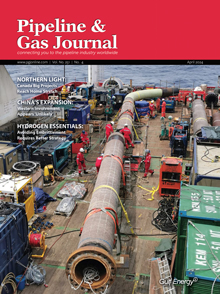DNV, Exxon Team Up to Develop Corrosion Detection Technology for Pipelines
DNV has joined Exxon Mobil in a joint industry project (JIP) to develop the next generation of microbiologically influenced corrosion (MIC) detection, monitoring and mitigation technology, the companies said on Thursday.
With global costs of corrosion estimated at $2.5 trillion, the project aims to significantly enhance detection and monitoring methods of microbiologically influenced corrosion (MIC).
Difficult to detect and monitor, MIC poses a significant problem in numerous industries, and taking early action to mitigate its effects can protect the environment and safe operations by reducing the risk of costly pipeline failures.
Assembling MIC experts from across the industry, the project plans to create up to 1,200 datapoints of corrosion-to-biomarker correlations, generated on simulated pipelines with actual field waters and participant-selected service conditions. The team aims to develop methods, tools and workflows (biomarker technology) to improve reliable detect of MIC in oil field operations, heavily leveraging advanced laboratory (bio)reactors and molecular analytical platforms that have been specifically developed for MIC biomarker discovery and KPI development.
“Corrosion is a global issue, and the work we have already undertaken at DNV to mitigate pipeline failure risk caused by MIC has given us a platform to further the advancement of early detection methods,” Dr. Susmitha Purnima Kotu, DNV JIP lead, said. “The MIC biomarkers identified during this JIP could also be used to monitor and manage MIC for other applications including, underground gas storage, offshore wind turbines, cooling water plants, water storage tanks, drinking water pipelines, ship hulls, fuel tanks etc.”
Molecular methods for the detection and characterization of microorganisms in oil field waters have emerged, but data tends to poorly correlate to system integrity and cannot currently be used as a leading indicator for MIC. Instead, MIC is most often diagnosed through analysis of metal-associated biofilms after damage has already occurred and other (abiotic) mechanisms have been excluded as root causes.
Consequently, the management of MIC remains a significant and potentially damaging challenge, with industry continuing to suffer from instances of shortened service life infrastructure due to undetected, harmful microbial activity.
DNV intends to partner with 6-10 additional project participants with a history of MIC, or areas of particular interest for use in laboratory simulation to assist in generating samples which will aid biomarker discovery.
Related News
Related News

- Keystone Oil Pipeline Resumes Operations After Temporary Shutdown
- Freeport LNG Plant Runs Near Zero Consumption for Fifth Day
- Biden Administration Buys Oil for Emergency Reserve Above Target Price
- Mexico Seizes Air Liquide's Hydrogen Plant at Pemex Refinery
- Enbridge to Invest $500 Million in Pipeline Assets, Including Expansion of 850-Mile Gray Oak Pipeline
- Enbridge Receives Approval to Begin Service on Louisiana Venice Gas Pipeline Project
- U.S. to Acquire 3 Million Barrels of Oil for Emergency Reserve in September
- AG&P LNG Acquires 49% Stake in Vietnam's Cai Mep LNG Terminal
- BP's Carbon Emissions Increase in 2023, Ending Decline Since 2019
- Texas Sues EPA Over Methane Emission Rules for Oil and Gas Sector





Comments